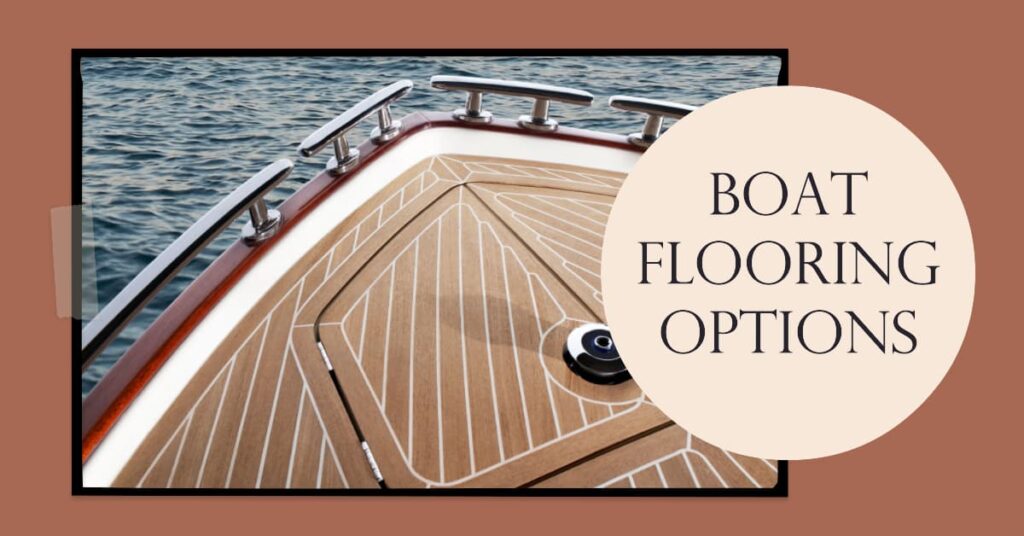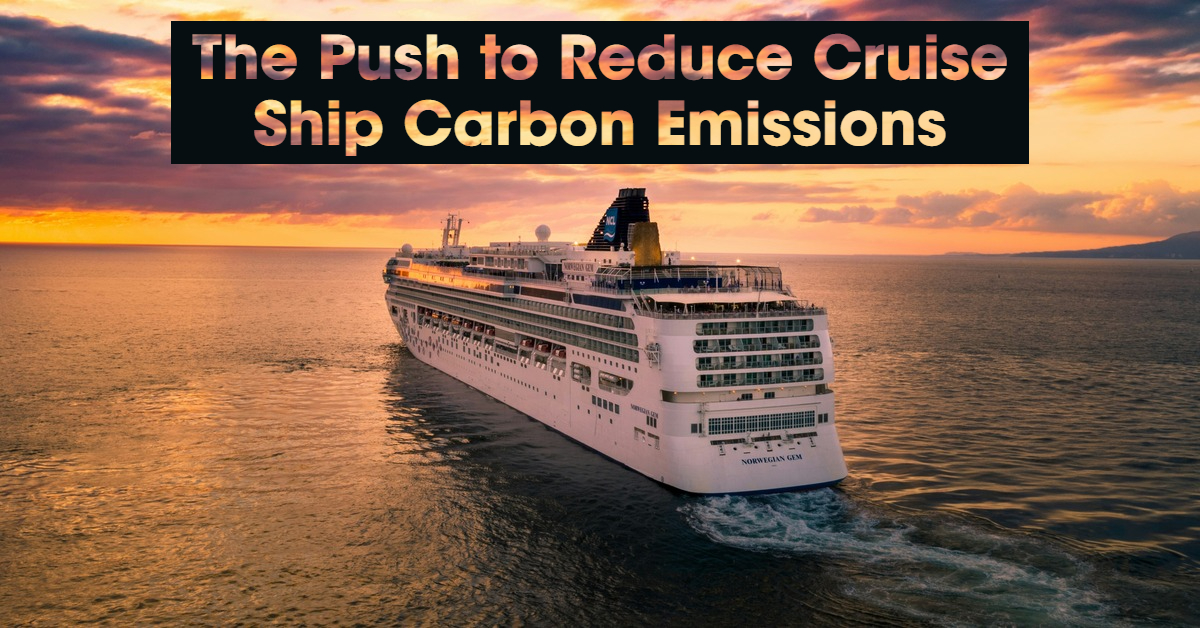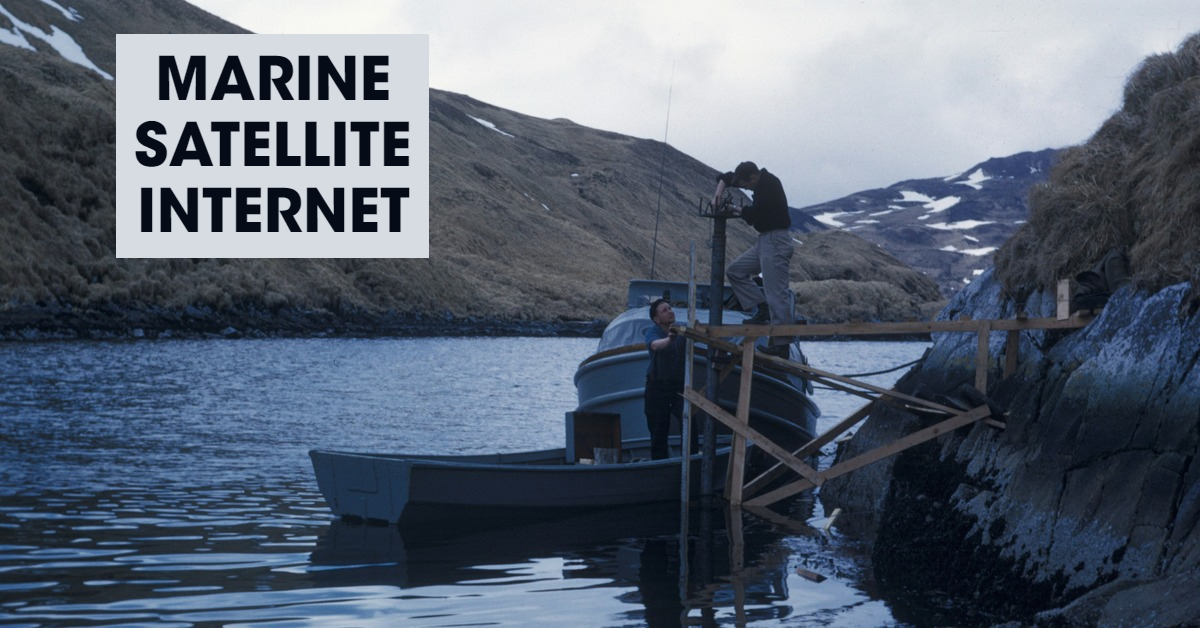If you’re a boat enthusiast, one of the aspects you’d want to focus on is the boat flooring options. Yes, it’s as crucial as picking the right engine or sail for your watercraft.
Why? Because a perfect boat floor can offer safety, enhance the look of your boat, and protect the value of your precious vessel. Let’s delve into seven types of boat flooring and understand their workings, benefits, disadvantages, costs, and common application methods.

Boat Flooring Options
There are 7 different major types of boat flooring options available in the market and their respective pros and cons. Here is a quick overview and then we will discuss each of the boat flooring options in detail:
- PVC Flooring Tiles: These are easy to install, available in various colors and patterns, and offer good protection to your boat. However, they are not UV stable and can fade over time.
- Drainage Tiles: Ideal for fishing boats, these tiles allow water to pass through them, making cleaning up easier. However, they can be uncomfortable for prolonged standing and are more expensive than other options.
- Foam Boat Flooring: Offering a non-slip surface, this type of flooring is comfortable and does not absorb water. DEKit’s foam boat flooring, in particular, comes highly recommended due to its antibacterial and anti-fungal coating and its ability to absorb less heat.
- Marine Carpet Flooring: Having been around for decades, this flooring type has evolved over the years to become softer, more durable, and water-resistant. However, it can fade over time due to UV damage and may harbor bacteria.
- Vinyl Marine Flooring: Usually found on yachts and ski boats, vinyl flooring is waterproof, UV-resistant, and provides good sound resistance. However, it can be slippery when wet.
- Aluminum Boat Flooring: Commonly used for smaller watercraft, aluminum flooring is lightweight and durable, potentially lasting between 35-45 years. However, it is not suitable for saltwater conditions as it can corrode easily.
- Rubber Boat Flooring: This is an eco-friendly option made from recycled car tires. It is slip-resistant and provides anti-fatigue benefits, but it is not UV stable.
| Boat Flooring Options | Pros | Cons |
|---|---|---|
| PVC Flooring Tiles | Easy to install, damage resistant | Not UV stable |
| Drainage Tiles | Water penetrative, good for fishing boats | Comfort issues with prolonged standing |
| Foam Boat Flooring | Non-slip, comfy, UV stable | May be more expensive |
| Marine Carpet Flooring | Durable, water-resistant | Fades over time, holds bacterial elements |
| Vinyl Marine Flooring | Waterproof, UV resistant, easy to clean | Slippery when wet |
| Aluminum Boat Flooring | Lightweight, durable, long lifespan | Corrosive in saltwater, heats up quickly |
| Rubber Boat Flooring | Eco-friendly, slip-resistant, anti-fatigue | Not UV stable |
PVC Flooring Tiles: An In-Depth Look
Polyvinyl Chloride, or PVC as it’s commonly known, is a type of synthetic plastic polymer that’s widely used in various applications, including flooring. When it comes to boat flooring, PVC tiles are one of the top choices for their combination of durability and aesthetic appeal.
Benefits of PVC Flooring Tiles
Easy Installation
One of the main benefits of PVC tiles is their ease of installation. These tiles often come with an interlocking system, allowing them to snap together like puzzle pieces. This straightforward design means you can install them yourself, saving on professional installation costs.
Versatile Designs
Another benefit of PVC tiles is their wide variety of colors and patterns. Whether you prefer a classic nautical theme or a modern, sleek design, there’s a good chance you can find PVC tiles to match your aesthetic. This versatility allows you to tailor your boat’s appearance to your personal style.
Damage Protection
PVC flooring tiles also provide excellent protection for your boat. They are tough and durable, resisting damage from the elements, whether you’re at sea or docked in the sun. If a tile does get damaged, you can easily replace it without having to overhaul your entire floor.
Drawbacks of PVC Flooring Tiles
While PVC flooring tiles offer several benefits, they also have some downsides.
UV Instability
One of the main drawbacks of PVC tiles is their lack of UV stability. Over time, continuous exposure to sunlight can cause the tiles to fade. This can affect your boat’s appearance and may necessitate more frequent replacements if you want to maintain its look.
Environmental Impact
Another downside of PVC flooring tiles is their environmental impact. PVC is a type of plastic, and like all plastics, it can take hundreds of years to break down in the environment. If sustainability is a top priority for you, you may want to consider other, more eco-friendly flooring options.
In conclusion, PVC flooring tiles can be a great option for your boat thanks to their durability, design versatility, and protective properties. However, be sure to weigh these benefits against their drawbacks to make the most informed decision.
Drainage Tiles: A Detailed Overview
Drainage tiles, as the name suggests, are a type of flooring designed to facilitate water drainage. They are particularly effective for specific boat activities such as fishing where water and other liquids may accumulate on the deck.
Benefits of Drainage Tiles
Effective Water Management
The primary advantage of drainage tiles lies in their ability to allow water to pass through, effectively controlling messes created during activities like fishing. Picture a scenario where you’re reeling in a large catch, and instead of creating puddles on the deck, the water simply drains away. This reduces the risk of slipping on wet surfaces and makes clean-up a breeze.
Easy Installation and Maintenance
Similar to PVC tiles, drainage tiles often feature an interlocking design, making them easy to install. In the event of damage or extensive wear, you can replace individual tiles instead of redoing the entire flooring. Furthermore, cleaning these tiles is as simple as spraying them down with a hose.
Drawbacks of Drainage Tiles
Potential for Discomfort
One of the main drawbacks of drainage tiles is the lack of comfort when standing for extended periods. Due to their design focused on practicality and drainage, they might not offer the same level of comfort or cushioning as other flooring options like foam or carpet.
Higher Cost
Drainage tiles can be more expensive than other flooring options. If cost is a significant factor in your decision, you might want to consider other alternatives.
In summary, drainage tiles can be an excellent choice for boating enthusiasts, especially those interested in fishing, due to their superior water management capabilities. However, keep in mind the potential for discomfort and a somewhat higher cost when considering this flooring option.
Foam Boat Flooring: An In-Depth Exploration
Foam boat flooring is a popular option among boating enthusiasts due to its comfort and safety features. Created from a specialized foam material, this type of flooring offers a range of advantages over more traditional boat flooring options. A variety of colors and patterns make it very popular, for example, as an upgrade on Jon’s boat.
Benefits of Foam Boat Flooring
Superior Comfort
One of the key benefits of foam boat flooring is the comfort it provides. Its soft, cushiony nature makes standing for extended periods much easier on your feet and back, reducing fatigue during long boating trips.
Safety and Non-Slip
Safety is another significant advantage of foam boat flooring. This material is designed to provide a non-slip surface, reducing the likelihood of slips and falls, even when the flooring is wet. This makes it particularly beneficial for high-traffic areas or in unpredictable weather conditions.
Temperature and Microbial Resistant
High-quality foam boat flooring, like DEKit‘s, is often coated with antibacterial and antifungal treatments, preventing the growth of harmful organisms. Furthermore, this type of flooring doesn’t absorb as much heat as wood or aluminum, so it stays cooler underfoot, even in hot weather.
UV Stable
Unlike some other types of boat flooring, foam flooring is typically UV stable. This means it won’t fade or discolor due to sun exposure, maintaining its appearance for a longer time.
Drawbacks of Foam Boat Flooring
While foam boat flooring has numerous benefits, it also has a few downsides to consider.
Potential for Damage
One potential drawback of foam boat flooring is its susceptibility to punctures or tears from sharp objects. If you frequently carry fishing equipment, tools, or other sharp items on your boat, this could be a concern.
Costs
Foam boat flooring, particularly high-quality versions, can be more expensive than some other types of boat flooring. However, many boat owners find that the extra cost is worth the comfort and safety benefits that foam flooring provides.
In conclusion, foam boat flooring is an excellent option for those seeking a blend of comfort, safety, and durability. Just be mindful of its potential vulnerabilities and higher cost when making your decision. We made a guide on the best foam flooring options that will be helpful if you consider using this boat flooring.
Marine Carpet Flooring: A Comprehensive Look
Marine carpet flooring has been a stalwart choice for boat interiors for decades. Made to withstand the rigors of marine environments, this carpeting offers a combination of comfort and resilience, although it has evolved significantly over time.
Benefits of Marine Carpet Flooring
Comfort and Feel
Marine carpet flooring offers a warm, inviting feel underfoot, which many boat owners appreciate. This carpeting is particularly comfortable when you’re barefoot, adding to the overall enjoyment of your boating experience.
Durability and Water Resistance
Unlike standard household carpet, marine carpeting is designed to resist water and the wear-and-tear typical in a boating environment. It’s built to withstand elements like salt, sun, and water, providing a durable flooring option that can last for years with proper care.
Technological Advancements
Over the years, marine carpeting has benefitted from technological advancements, becoming softer, more durable, and more water-resistant than its predecessors. These improvements have helped maintain its popularity among boating enthusiasts, especially as flooring for Bass boats.
Drawbacks of Marine Carpet Flooring
Despite its benefits, marine carpet flooring also comes with a few drawbacks.
Fading and Damage Over Time
While marine carpet is more durable and water-resistant than regular carpet, it can still fade and sustain damage over time, particularly from UV exposure. Over the years, continuous sunlight can lead to noticeable fading, detracting from the overall appearance of your boat.
Difficulty in Cleaning
Another disadvantage is that marine carpet can hold onto dirt, grime, and bacterial elements more so than non-fabric flooring options. This can make it more challenging to clean, especially if you frequently fish or do other activities that might dirty your boat’s flooring.
In conclusion, marine carpet flooring can offer a comfortable and aesthetically pleasing choice for your boat, especially if you value the cozy feel it provides. However, the potential for fading and the effort required for cleaning are aspects to keep in mind when considering this option.
Vinyl Marine Flooring: A Thorough Examination
Vinyl marine flooring is a type of synthetic flooring widely used in yachts, ski boats, and other types of watercraft. It’s unique in its construction, boasting features that set it apart from regular vinyl flooring used in residential settings.
Benefits of Vinyl Marine Flooring
Water and UV Resistance
Vinyl marine flooring is designed to resist both water and harmful UV rays, making it an excellent choice for boats. This feature ensures that your boat’s flooring remains undamaged, even in challenging weather conditions or continuous sun exposure.
Easy to Clean
For boating enthusiasts, especially those who enjoy fishing, vinyl flooring is a gift. This type of flooring is incredibly easy to clean – a simple wipe or a quick scrub is usually enough to get rid of any stains or dirt.
Sound Resistance
A less-known but highly appreciated feature of vinyl flooring is its ability to dampen sound, providing a quieter onboard experience. This is especially beneficial in boats with powerful engines, where noise reduction can significantly improve comfort levels.
Drawbacks of Vinyl Marine Flooring
Slippery When Wet
While vinyl flooring is water-resistant, it can become quite slippery when wet. This could potentially create a hazard, especially when the boat is in motion or during wet weather conditions.
Different From Household Vinyl
It’s essential to understand that marine vinyl flooring is different from the vinyl flooring used in homes. The latter is not designed to withstand the harsh conditions often encountered on boats, and using it as such could lead to quick wear and damage.
In summary, vinyl marine flooring is a robust and practical choice for those seeking a flooring option that’s easy to clean, resistant to water and UV rays, and provides some level of sound dampening. However, it’s worth considering the potential slip hazard when the flooring is wet.
Aluminum Boat Flooring: Delving Deeper
Aluminum boat flooring is a durable and lightweight option commonly used in smaller watercraft and Jon boats. Its unique properties make it an excellent choice for those seeking a long-lasting and robust flooring solution for their vessels.
Benefits of Aluminum Boat Flooring
Lightweight and Durable
Aluminum is a lightweight material, making it an excellent choice for boat flooring, particularly for smaller vessels. Despite its lightness, it is extremely durable, capable of withstanding heavy usage without damage.
Long Lifespan
One of the most appealing features of aluminum boat flooring is its longevity. A well-maintained aluminum boat can last anywhere between 35-45 years, maintaining its value and reducing the need for frequent replacements.
Fuel Efficiency
Since aluminum is lighter than many other types of boat flooring, it contributes to better fuel efficiency. Less weight means less power needed to move the boat, leading to savings in fuel costs.
Drawbacks of Aluminum Boat Flooring
Corrosion in Saltwater
While aluminum is generally resistant to corrosion, it’s not the best match for saltwater. Exposure to saltwater can lead to corrosion if the flooring is not properly protected, which may lead to additional maintenance or replacement costs.
Heat Conductivity
Aluminum conducts heat very efficiently, which means it can become very hot in sunny weather. This could make it uncomfortable to walk barefoot, requiring the use of footwear or protective mats.
In summary, aluminum boat flooring is a durable and lightweight option that can offer excellent longevity and fuel efficiency. However, its suitability for use in saltwater environments and its high heat conductivity are factors to consider when choosing this type of flooring.
Rubber Boat Flooring: An In-Depth Look
Rubber boat flooring is a distinctive choice, notable for its eco-friendly nature and unique properties. Crafted from recycled car tires, it brings several advantages to the table while carrying a few drawbacks as well.
Benefits of Rubber Boat Flooring
Eco-Friendly Choice
One of the standout features of rubber boat flooring is its eco-friendly nature. By reusing old car tires, this flooring option reduces waste and helps contribute to a healthier environment.
Slip Resistance
Rubber boat flooring is slip-resistant, providing excellent traction even when wet. This characteristic makes it a safer choice for high-traffic areas or for those boating in conditions where the flooring is often damp.
Anti-Fatigue Properties
Rubber flooring has a slight ‘give’, which can reduce fatigue and discomfort from standing for extended periods. This feature makes rubber flooring a comfortable choice for those who spend a lot of time on their feet while boating.
Easy Installation
Rubber boat flooring often comes with self-adhesive backing, making installation relatively simple. If you ever decide to change it, the removal process is also straightforward.
Drawbacks of Rubber Boat Flooring
Not UV Stable
The main disadvantage of rubber boat flooring is its lack of UV stability. Prolonged exposure to direct sunlight can cause the flooring to fade or become discolored over time. You may need to use a UV protectant or shade the flooring to maintain its appearance.
To summarize, rubber boat flooring is an eco-friendly, slip-resistant, and comfortable option that’s easy to install. However, it’s less resistant to UV light compared to other options, which may require additional care to maintain its look.
FAQs about Boat Flooring Option
What are the best boat flooring options for durability?
Aluminum and foam boat flooring are both noted for their durability, often lasting for decades with proper care.
Which boat flooring options are the most eco-friendly?
Rubber boat flooring is considered eco-friendly as it’s made from recycled car tires.
How do I choose the right boat flooring option for my boat?
Consider factors like your budget, the type of boating you do, and the kind of climate your boat will be in.
Can I install boat flooring myself, or do I need a professional?
Some boat flooring options, like PVC and rubber tiles, are straightforward to install yourself. Others may require professional installation.
Do all boat flooring options resist UV damage?
Not all options are UV resistant. For instance, PVC tiles and rubber flooring may fade with prolonged exposure to sunlight.
- Sustainable and Luxurious: Discovering Split’s Yachting Paradise – April 26, 2024
- MarineTraffic vs VesselFinder: Which Is Better Vessel Tracking Service? – February 14, 2024
- Port Costs: A Comprehensive Guide to Port Dues and Fees for Cargo Ships – February 12, 2024




Leave a Reply